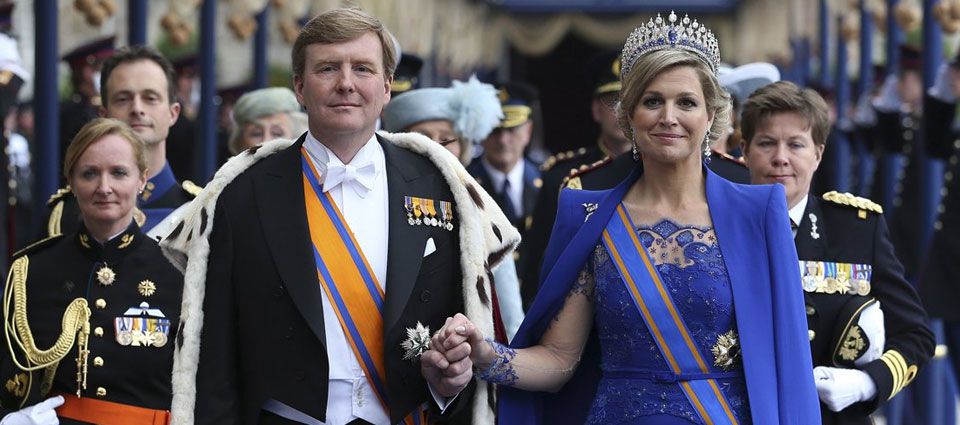Play the music which accompanies this article.
On Monday January 28th, 2013 Queen Beatrix announced that she will abdicate. She succeeded her mother Princess Juliana 33 years ago and now her eldest son, Prince Willem-Alexander, will succeed her as the new monarch of the Netherlands. The investiture will occur at the Nieuwe Kerk in Amsterdam on April 30, 2013.
Time for a new generation
Queen Beatrix was queen for nearly 33 years, making her the longest reigning monarch after her grandmother Queen Wilhelmina (50 years) and King Willem III (41 years and 9 months). She abdicates not because she feels the work has become too strenuous but rather because she believes that the country should be led by a new generation.
An Investiture not a coronation
On 30 April 2013 Prince Willem-Alexander will succeed his mother Queen Beatrix as the new monarch of the Kingdom of the Netherlands. The ceremony in Holland is called an investiture, during which the monarch is honored in a ceremonial manner by his subjects and accepts the crown. It means that the monarch is not actually crowned; the crown, the scepter and the royal apple are placed on the so-called credence table, together with a copy of the Constitution.
The investiture as it is known it The Netherlands differs from the tradition in other countries, where kings and queens are ‘crowned’. The difference is that a coronation is of a religious nature while an investiture is a secular ceremony.
Pledging loyalty
An investiture means that the representatives of the people as joined in the States General pledge loyalty to the monarch and the monarch himself or herself pledges loyalty to the Constitution. Even without an investiture the monarch would have the right to exercise royal power since a throne cannot be ‘vacant’. Above all, the investiture is a confirmation of a new monarch’s rise to power.
Queen Beatrix’s decision to hand over the throne to her eldest son may have historical significance, but the actual process and ceremony is very simple.
On April 30th, she will sign a document – the act of abdication – and Willem-Alexander automatically becomes king, although he still has to be invested. His oldest daughter, Catharina-Amalia, will automatically become first in line to succeed him.
Willem-Alexander will be sworn in in the Nieuwe Kerk in Amsterdam, but it will be a secular rather than a religious ceremony.
The inauguration takes the form of a meeting of the upper and lower houses of parliament – as set down in the constitution. This means all members of the lower and upper houses of parliament will be there as will a limited number of other guests.
The new king will then swear to be faithful to the constitution and to fulfill his role properly.



.jpg)


